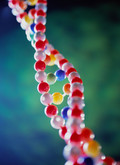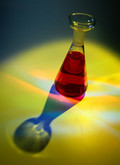Biosimilars
Oncologists urged to embrace biosimilars to help control spiraling costs of cancer care
Oncologists have been urged to embrace biosimilar drug substitution to help control the spiraling costs of cancer care. However, they have been warned that the optimal realisation of such a programme requires successful educational initiatives and the development of effective working partnerships with pharmacists and patients [1].
Regulation of biosimilars in the US
The US pharmaceutical industry plays a vital role in shaping the face of American health care. With major patent expiries and thin product pipelines, the industry is now considering new directions to maintain growth and stability. Biological drugs, derived from living organisms, represent a growing opportunity for big pharmaceutical firms. They command high prices, will probably have fewer firms making them than generics due to high barriers to entry, and play to the existing strengths of big pharma firms. But will the recent healthcare legislation provide the way for consistent FDA regulation? What is the most likely way in which biologicals will enter the market over the next few years?
Biosimilars: demonstrating ‘similarity’
Most biological drugs are mixtures of closely related compounds, some of which are probably more active than others. Today, the state-of-the-art manufacturing struggles to deliver material that is similar to the prior batch from the same facility and team [1]. Identical is currently not possible, therefore ‘similar’ is the route that authorities in Europe and the US are going down.
Successful completion of biosimilar infliximab programme
South Korean biotechnology company Celltrion announced on 1 February 2012 the successful completion of the company’s clinical programme for its (CT-P13) biosimilar of Johnson & Johnson’s rheumatoid arthritis blockbuster Remicade (infliximab).
Quality by design in biomanufacturing
In January 2011, FDA published its long-awaited guidance for industry on Process Validation: General Principles and Practices [1].This replaces the previous 1987 version (updated 2004) and it is understandably a big change for some whose whole career has been dominated by the previous approach. The question is: why was a change needed and how drastic is it?
EMA risk management plans may increase prescriber confidence in biosimilars
In the absence of observational (phase IV) data, EMA’s stipulation that all marketing applications for new generation biosimilars contain individual risk management plans may help to increase prescriber confidence in the compounds [1].
Registration of biosimilars in Europe and the US
Europe is way ahead of the US in terms of biosimilars regulation. A legal framework for approving biosimilars in the EU was established in 2003 and guidelines for an abbreviated registration process were issued in 2006 [1].
Spinnovation enters biosimilar collaboration with Quantum Tessera
Dutch-based bioanalysis specialist Spinnovation Biologics (Spinnovation) announced on 24 January 2012 that it had entered into a collaboration with US-based consulting company Quantum Tessera.
Factors affecting market access of biosimilars
Growth in the use of biosimilars is being driven by the need to reduce healthcare costs, patent expiries on blockbuster originator biologicals and better-defined regulatory pathways.
Production of 24 biogeneric products in Iran by 2012
According to reports on Iran’s English-language television network, Press TV, Iran is making significant advances in biogeneric products and biotechnology drugs and is planning to start the production of 24 additional biogeneric products drugs by the end of 2012.













